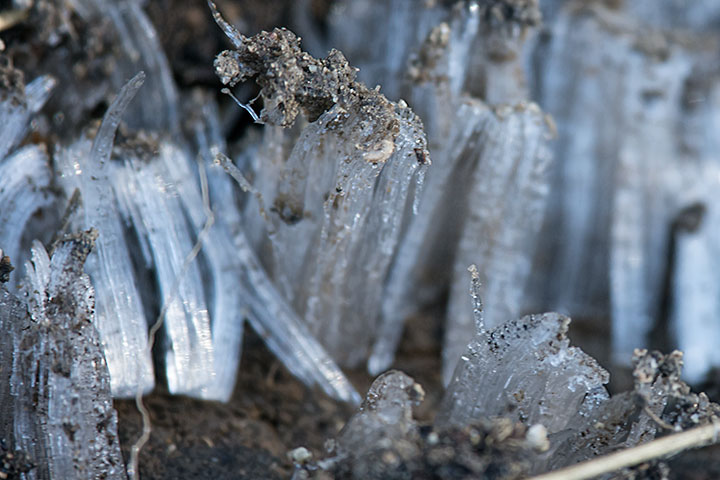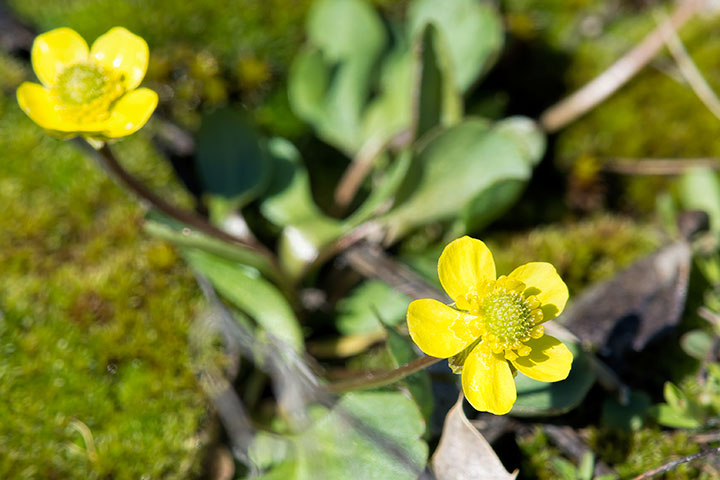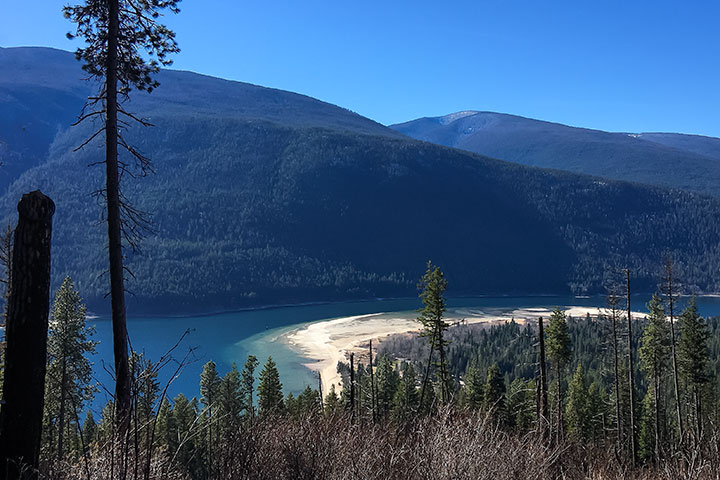In a lovely example of a seasonal transition, I saw ice extrusions and subalpine buttercups within three metres of each other at an altitude of about 800 metres on a mountainside above Kootenay Lake.
Typically, ice extrusions are seen when the daytime temperature is above 0C and the nighttime temperature is below, so this is not a midwinter phenomenon. During daytime, water drains into the cavities within a porous soil; during nighttime, the freezing water expands forcing little columns of ice up through the ground (often capped with dirt). Those of us who remember the home delivery of milk to a cold doorstep in the winter are already familiar with the process whereby the cap of the milk bottle was lifted atop a column of frozen cream. When I wrote about these a year ago, a commentator noted that geologists refer to these as ice needles, a name that has a different meaning for meteorologists.

About three metres away was a crop of a dozen (what I suspect were) subalpine buttercups (Ranunculus eschscholtzii), an early sping flower — lovely.

And for fun, I include a picture from the same spot, but looking down towards Kokanee Creek Peninsula.


I know this as “frost heaving” and have seen it push newly planted seedlings out of the ground in both spring and fall. It happens with fine textured soils, high in silt and clay content, because they retain moisture while coarser textured soils allow moisture to drain away. Great pictures. I didn’t realize how extensive the Kokanee Cr. peninsula was.
Tom, it seems there is a wide variety of names for it. As to the size of the Kokanee Creek peninsula, this is March so there is a great deal of sand showing that is normally underwater.
I am aye learning on your picture pages. Many thanks irenemci